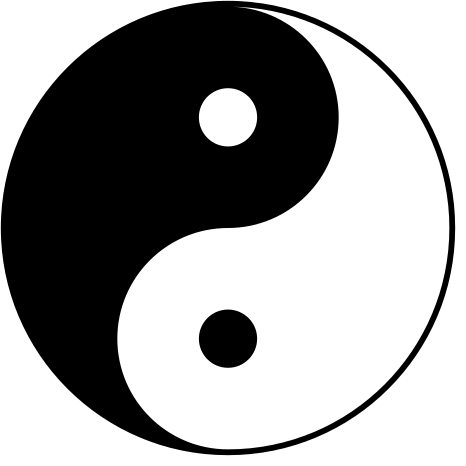Sub-Menu
- Tai Chi Principles
- Tai Chi Stances
- Yang Style
- Sun Style
- Chuk Kai Tai Chi
- Swimming Dragon
- Tai Chi Fan
Tai Chi
Tai Chi, or more properly T'ai chi ch'uan (太极拳), or supreme ultimate fist, is an internal style of Chinese martial art. See Wikipedia for a full description.
 |
| Yin- Yang symbol |
This is encapsulated in Yin and Yang, showing how opposite or contrary forces are actually complementary, interconnected, and interdependent in the natural world. There is an excellent article in the Internet Encyclopedia of Philosophy
There are 10 principles in Tai Chi which and be sumarised into 3 main Principles:
- Body Structure: Upright posture, balance, weight transfer and breathing
- External components which focus on slow, smooth continuous controlled movements (mind/body integration), a circular flow and gentle resistance.
- Internal components which focus on Song (gentle expansion), Jing (serenity) and Qi (life energy)
All movements are directed by the mind; they start at the feet, are controlled by the waist and expressed by the hands.
There are five major styles of Tai Chi and some lesser know styles. No one style is superior to another, each having their own advantages and benefits. These are described briefly below in chronological order.
Chen Style
In 1670's Chen Wangting, a retired army general of the Chen Village in Henan Province, developed several Tai Chi routines, which included the old frame form still practised today. This is known as Chen style Tai Chi which is oldest form of Tai Chi. Chen style Tai Chi is characterised by alternating fast and slow movements, soft gentle moves and explosive, force delivery moves.Yang Style
Yang Style Tai Chi was created by Yang Luchan in the early 19th century. This is a more gentle form and is the most popular form practiced today. This style is characterised by gentle large frame movements. The internationally practiced Simplified 24 Form is largely based on the Yang Style. Read more on the Yang Style page.Hao Style
Wu Yuxiang created the Hao style Tai Chi which is a lesser know style. This style places emphasis on internal force.Wu Style
Wu Jian-quan created the Wu style Tai Chi. This style is characterised by softness and an emphasis on re-directing incoming force. This style tends to have a slightly forward leaning posture.Sun Style
Sun style Tai Chi;created by Sun Lu-tang in the early 1900s is the most recent of the major styles. This style is interesting because Sun Lu-tang who developed this style was a well know exponent of Xingyiquan and Baguaquan (two other famous internal styles). Sun style has lots of Qigong elements is characterised by lively steps and a slightly higher stance. Tai Chi for Arthritis which is described on the Tai Chi for Health page is based on this style.There are also some less well-known styles. They are described in more detail on this page.
Chuk Kai Tai Chi
Guang Ping Yang Tai Chi Chuan
Guang Ping Yang Tai Chi Chuan has become known as the "lost" tai chi chuan form, which combines aspects of Yang and Chen styles.Swimming Dragon
According to legend, Swimming Dragon was created by a Daoist master who was imprisoned for a long time. He had very little room to move in his prison cell and created a way of practicing in a small area.Tai Chi Fan
The most popular form of the Tai Chi Fan is the Tai Chi Kung Fu Fan 52 or the 52 Movements Fan (Shang) Form. This is a dramatic form created by Professor Li Deyin in 2001 and is based on the characteristic Tai Chi postures with the fan's artistic and martial functions. Read more on the Tai Chi Fan page.The video below by Master Wells Ye of Beijing provides a comparison of the four most commonly practiced styles of Tai Chi: Chen, Yang, Wu and Sun.
